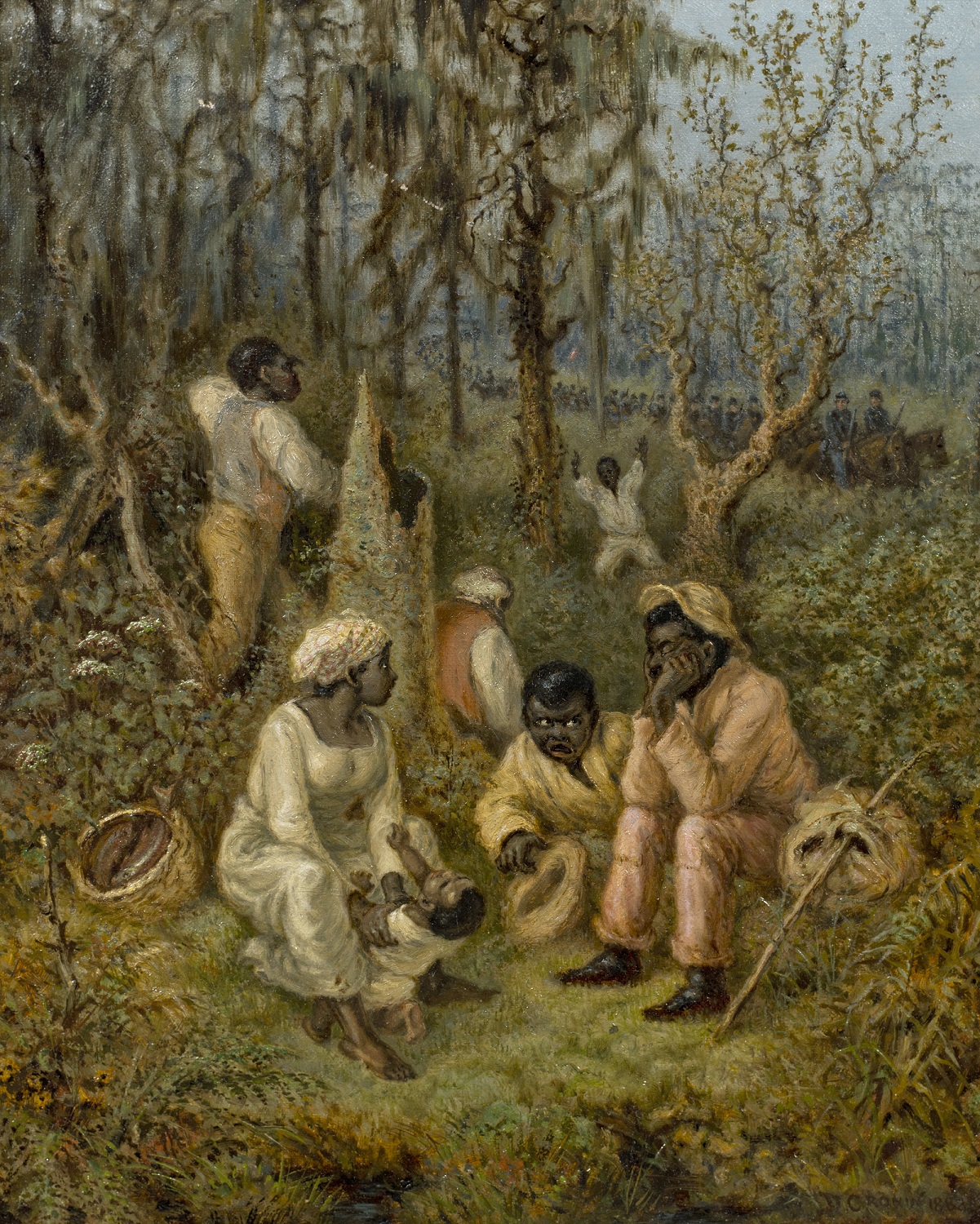Background
The Great Dismal Swamp is a large marshy area that straddles the eastern section of the border between Virginia and North Carolina. It is very difficult to navigate, but there are islands scattered throughout it. There is evidence that Indigenous people inhabited the swamp’s islands as far back as 13,000 years.
In the 1700s and 1800s, the Great Dismal Swamp became a popular place for self-emancipated people to hide from their enslavers and start new lives. There is archeological evidence that some of the islands in the swamp were home to thriving communities that historians call Maroon societies. Maroon societies existed in many inhospitable corners of the U.S. wilderness until the Civil War ended slavery in 1865. But historians believe the Great Dismal Swamp was home to the most Maroons in the country.
Daily life in the Great Dismal Swamp was very challenging, but the terrible conditions protected the inhabitants from the enslavers who wished to capture them. Most of the history of the Maroon societies of the Great Dismal Swamp was lost when the communities disbanded after the Civil War. Archeologists and historians are now piecing together the stories. They are important examples of the resistance and resilience of Black Americans in U.S. history.
About the Image
This painting is an artist’s interpretation of life for Maroons in the Great Dismal Swamp. It shows that the swamp was home to people of all ages and sexes. It also suggests that the constant threat of discovery was a source of anxiety for everyone who lived there. It does not show us what the communities of the swamp looked like, probably because the artist never saw one. The fact that this painting was created 23 years after the end of the Civil War shows that people were still sharing the stories of Maroon societies and admiring their resilience long after they had disbanded.
Vocabulary
- Great Dismal Swamp: A large marshy area that straddles the eastern section of the border between Virginia and North Carolina.
- Maroon: A person who escaped slavery and lived in a hidden community in the wilderness to avoid recapture.
- self-emancipated: People who have freed themselves from slavery, usually by running away or purchasing their freedom.
Discussion Questions
- What would it be like to live in a place like the one shown in this painting? What particular challenges do you think women faced in places like this one?
- How does this painting make you feel? How did the artist elicit that reaction?
- What is the value of analyzing paintings that were not drawn from life? How should we approach artistic interpretations of historical events?
Suggested Activities
- Invite students to learn more about how archeologists and historians are uncovering the history of Maroon societies in the Great Dismal Swamp, read this article from Smithsonian Magazine. Then ask them to write a reflection paper about why this work is important.
- To help students better understand the challenges Maroon women in the Great Dismal Swamp may have faced, pair this image with White Settler Women.
- For more stories of slavery and self-emancipation in the Federal Period, see: Abolition Loopholes, Life Story: Oney Judge, Life Story: Sukey, The Second Middle Passage, and Life Story: Anna Madgigine Jai Kingsley.
- For another example of a Maroon society in the early United States, see The First Seminole War.
Themes
POWER AND POLITICS; AMERICAN IDENTITY AND CITIZENSHIP







